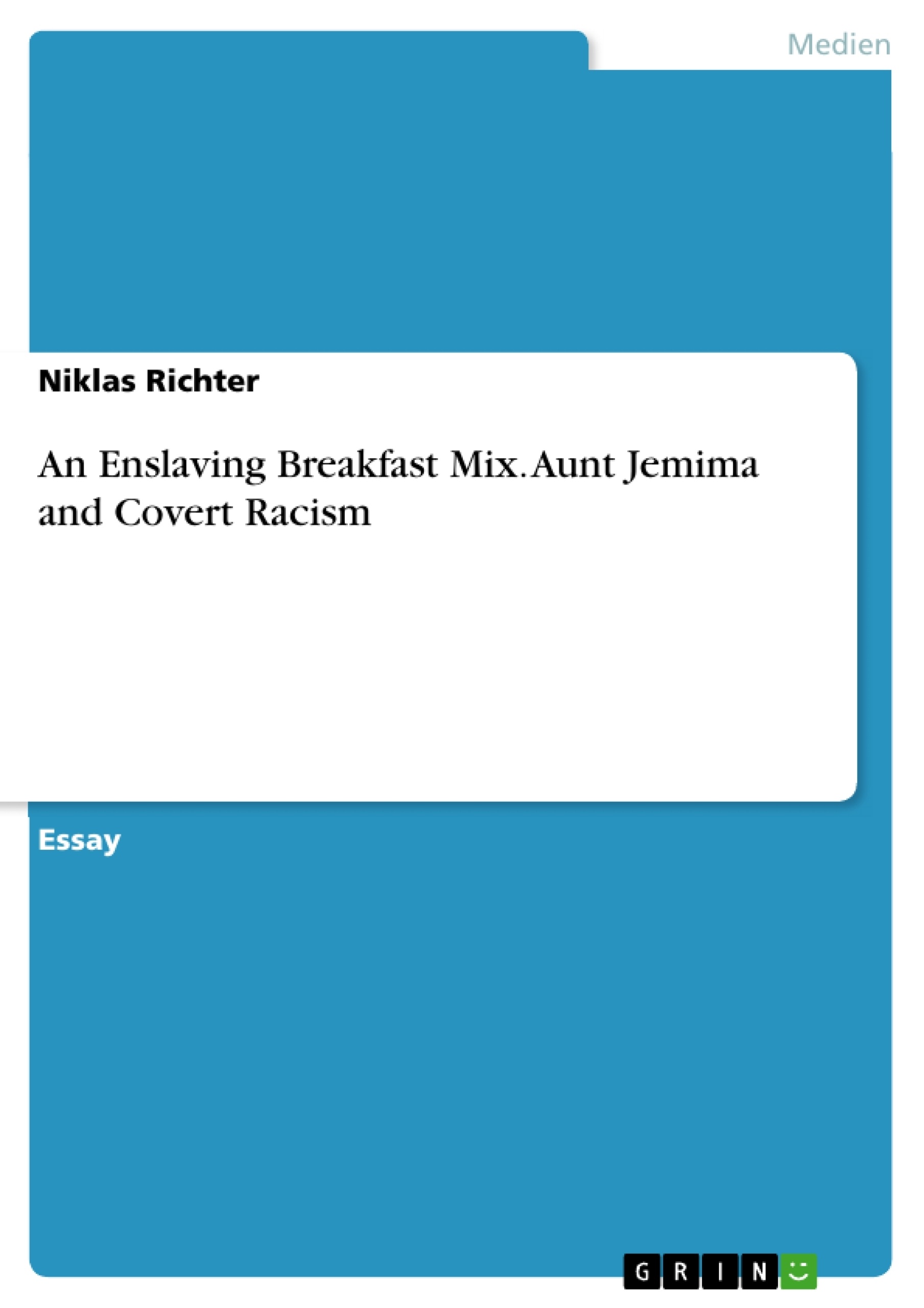When companies undergo severe criticism for a product, they are often faced with two options: either make changes to its design or rebrand the whole commodity itself. The latter can be seen with the former popular pancake mix ‘Aunt Jemima’ by Quaker Oats, which was a brand that specialised in the advertisement for breakfast products, such as self-raising flour and syrup.
This essay argues that the controversy of the former Aunt Jemima brand and its name change showcase how popular enterprises employ racism and stereotypes to boost market sales of their products. In this paper, said connection will be briefly outlined by an analysis of the Aunt Jemima products and the cover-up of the racist history tied to them. By taking a closer look at individual ingredients such as the antebellum romanticization of the south, minstrel shows, as well as advertisements of Aunt Jemima and, with that, reimagined African American Vernacular English (AAVE), her, in racial inequality enrooted, recipe for success will be exposed.
In order to evade further criticism and not lose their public image, Quaker Oats rebranded its product, displaying miniscule ethical ambitions regarding the long-ongoing justified critiques but rather only commercially driven interests. Evidently, the concealed derogatory usage of minorities on the covers of material goods illuminates a link between white superiority and commodity racism.
Inhaltsverzeichnis
- An Enslaving Breakfast Mix: Aunt Jemima and Covert Racism
- Introduction: The Aunt Jemima Brand and its History
- The Dichotomy of Self and Other: A Colonial Framework
- The Power of Commodities and Commodity Racism
- Aunt Jemima's Pancake Mix: A Case Study in Commodity Racism
- The Depiction of Aunt Jemima: Minstrel Shows and Racial Stereotypes
- Language and Racial Inequality: Aunt Jemima and African American Vernacular English (AAVE)
- The Rebranding of Aunt Jemima: A Case of Commercial Interests
- Conclusion: The Perpetuation of Commodity Racism and its Consequences
Zielsetzung und Themenschwerpunkte
Dieser Essay analysiert den Fall der Aunt Jemima Marke und ihren Namenswechsel im Kontext von Kommodificierungsrassismus. Er argumentiert, dass Unternehmen rassistische Stereotypen und Darstellungen verwenden, um ihre Produkte zu bewerben und ihre Verkaufszahlen zu steigern. Der Essay beleuchtet die historischen Wurzeln des Kommodificierungsrassismus und die Rolle von Minstrel Shows, der "Mammy" Archetyp und der Verzerrung der afrikanisch-amerikanischen Sprache im Fall von Aunt Jemima.
- Kommodificierungsrassismus und seine Auswirkungen auf die Darstellung von Minderheiten
- Die historische Verwendung des "Mammy" Archetyps und seine Verbindung zur Sklaverei
- Die Rolle von Minstrel Shows und die Verzerrung der afrikanisch-amerikanischen Sprache
- Die Bedeutung von Unternehmensethik und der Frage nach Verantwortung gegenüber marginalisierten Gruppen
- Die Folgen von Kommodificierungsrassismus für die öffentliche Wahrnehmung und die Rezeption von Marken
Zusammenfassung der Kapitel
- Introduction: The Aunt Jemima Brand and its History: Die Einleitung stellt die Aunt Jemima Marke und ihren Namenswechsel in den Kontext der gesellschaftlichen Debatte um Rassismus und Diskriminierung. Sie erklärt die Kritik an der Marke und ihre Geschichte als Beispiel für Kommodificierungsrassismus.
- The Dichotomy of Self and Other: A Colonial Framework: Dieses Kapitel analysiert die koloniale Denkweise, die die Unterscheidung von Selbst und Anderem hervorbringt und zur Rechtfertigung von Diskriminierung und Unterdrückung führt. Es zeigt auf, wie diese Dichotomie zur Schaffung von rassistischen Stereotypen beiträgt.
- The Power of Commodities and Commodity Racism: Dieses Kapitel untersucht die Rolle von Konsumgütern in der Reproduktion von Rassismus und der Perpetuierung von Stereotypen. Es beleuchtet die Verbindung zwischen Waren und rassistischen Ideologien und erklärt das Konzept des Kommodificierungsrassismus.
- Aunt Jemima's Pancake Mix: A Case Study in Commodity Racism: Dieses Kapitel betrachtet die Aunt Jemima Marke als Beispiel für Kommodificierungsrassismus. Es analysiert die Verwendung des "Mammy" Archetyps und die Verbindung zur Sklaverei sowie die Rolle der Marke in der Verzerrung der afrikanisch-amerikanischen Sprache und Kultur.
- The Depiction of Aunt Jemima: Minstrel Shows and Racial Stereotypes: Dieses Kapitel untersucht die Darstellung von Aunt Jemima in Werbung und Marketing und die Verbindung zu Minstrel Shows und rassistischen Stereotypen. Es analysiert die Verzerrung des Bildes von schwarzen Menschen und die Verwendung von stereotypischen Attributen.
- Language and Racial Inequality: Aunt Jemima and African American Vernacular English (AAVE): Dieses Kapitel konzentriert sich auf die Verwendung von AAVE in der Werbung für Aunt Jemima und untersucht die Absicht, die schwarze Sprache in einer abwertenden Weise darzustellen. Es erklärt, wie die Verzerrung von Sprache zur Verfestigung von rassistischen Stereotypen beiträgt.
Schlüsselwörter
Die Schlüsselwörter des Essays sind: Kommodificierungsrassismus, Aunt Jemima, Minstrel Shows, "Mammy" Archetyp, afrikanisch-amerikanische Sprache, AAVE, Rassismus in der Werbung, Unternehmensethik, Stereotypisierung, Diskriminierung, Kolonialismus.
- Quote paper
- Niklas Richter (Author), 2023, An Enslaving Breakfast Mix. Aunt Jemima and Covert Racism, Munich, GRIN Verlag, https://www.grin.com/document/1365064



